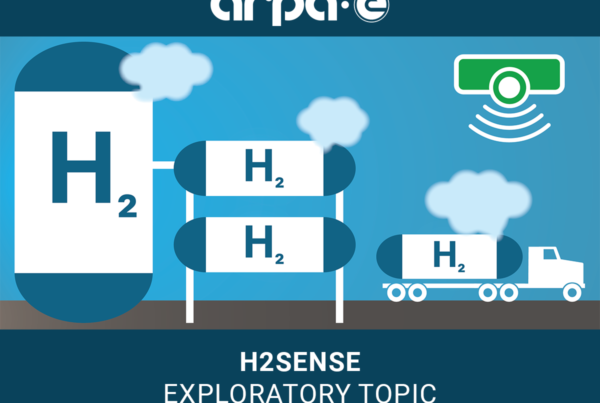
The United Arab Emirates (UAE) has set itself the goal of becoming one of the leading global producers of low-carbon hydrogen by 2031. With this aim, the UAE government commissioned the Fraunhofer Cluster of Excellence Integrated Energy Systems (CINES) and the consulting firm GHD Advisory to develop a National Hydrogen Strategy.
The strategy, released yesterday at the second Emirates Energy Forum by the UAE Ministry of Energy and Infrastructure (MOEI), is a comprehensive analysis of the opportunities and obstacles for the future hydrogen economy in the UAE.
With the aim of achieving climate neutrality, the UAE’s National Hydrogen Strategy includes measures to promote low-carbon local industries through the growth of the hydrogen economy. The UAE intends to become one of the world’s largest hydrogen producers by 2031. The strategy aims to develop long-term measures towards a sustainable energy policy and to direct further investments into this sector.
By 2031, 1.4 million tons of low-carbon hydrogen are to be produced annually via various production processes. Under the right market conditions, sectoral demand in the UAE could reach 2.1 million tons per year by 2031, with an additional export potential of 0.6 million tons per year. At the same time, investments in hydrogen research and development are to be stimulated and rendered widely accessible. Looking towards a defossilized future, the authors of the Hydrogen Strategy from Fraunhofer CINES and GHD conclude that the UAE’s low-carbon hydrogen production capacity could reach 7.5 million tons per year by 2040 and almost 15 million tons per year by 2050.
»Hydrogen has the potential to play an important role in the UAE’s transition to a low-carbon economy,« says Sharif Al Olama, Undersecretary for Energy and Petroleum at the Ministry of Energy and Infrastructure. »We are committed to implementing the UAE’s National Hydrogen Strategy to unlock economic opportunities while achieving our net zero target. Our goal is to establish the UAE as a leading country in the global hydrogen market, create new economic opportunities, and contribute to a more sustainable future for everyone.«
The strategy’s specific measures primarily include the creation of so-called hydrogen oases. These are hydrogen production hubs that will play a pioneering role by activating the domestic hydrogen market. At the same time, an appropriate policy framework will support the growth of the hydrogen industry and initiate cooperation with other countries in the region in the production, transport, and use of hydrogen, on the path toward a global hydrogen market. The researchers expect domestic as well as export demand for hydrogen to be significant – driven by the UAE’s net zero target for 2050 as well as by global demand for environmentally friendly hydrogen, sustainable aviation fuel, and sustainable chemical products.
Dr. Jan Frederik Braun, Head of Hydrogen Cooperation (MENA Region) at Fraunhofer CINES, explains: »This hydrogen strategy, which was developed together with all of the key hydrogen and energy players in the UAE, takes into account all aspects of the hydrogen value chain, from production to distribution to use. The UAE’s opportunity to create value in the emerging global hydrogen market lies in its ability to produce innovative and competitive hydrogen-based end products along the entire value chain. As Europe’s largest applied research organization, Fraunhofer has the expertise and experience to develop, test, and bring hydrogen technologies to market maturity for industrial partners in the UAE.«
Already in March 2022, a delegation from the Fraunhofer Society and the UAE’s Ministry of Energy and Infrastructure signed a memorandum of understanding in the presence of German Federal Minister for Economic Affairs and Climate Action, Robert Habeck. Both sides agreed to work together on innovative research projects, including in the area of low-carbon hydrogen technologies. Fraunhofer’s participation in the UAE’s National Hydrogen Strategy promotes research cooperation and the exchange of knowledge and technology between the UAE and Germany.
In CINES, the Fraunhofer-Gesellschaft brings together the competencies of its institutes for applied energy research. The cluster includes the Fraunhofer Institute for Solar Energy Systems ISE and the Fraunhofer Research Institution for Energy Infrastructures and Geothermal Systems IEG, both of which worked on the strategy.

Image presents the UAE’s hydrogen production capacities supplying all potential sectoral de-mands and the export for the lower international demand forecast. Looking beyond 2031 and towards a decarbonized future, the researchers from GHD and Fraunhofer CINES anticipate the UAE’s low-carbon hydrogen production capacity to be 7.5 million tons per year (mtpa) by 2040, potentially reaching nearly 15 million tons per year by 2050. Green hydrogen comprises hydro-gen produced by electrolysis of water with electricity from renewable sources. Blue hydrogen is produced from natural gas in combination with carbon capture and storage (CCS). Pink hydro-gen is also produced by electrolysis, with the required electricity coming from nuclear energy. Climate-damaging CO₂ is not produced in the process, but radioactive waste is, which must be safely and permanently disposed of.
SOURCE: Fraunhofer ISE
Read the most up to date Fuel Cell and Hydrogen Industry news at FuelCellsWorks




